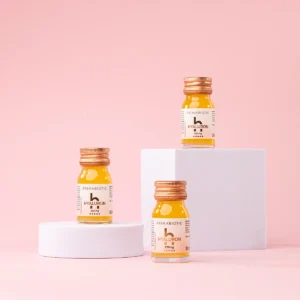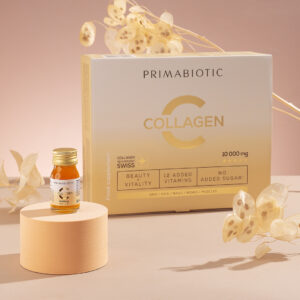Dr. Wanda Baltaza is a clinical dietitian, university lecturer, nutrition expert, and brand ambassador for Primabiotic. What does she think about Primabiotic Collagen and Hyaluron supplements – in terms of composition, form, effectiveness, and instrument-based research results? Her opinion reflects not only professional expertise but also a personal perspective as a specialist who analyzes supplements daily – both for herself and her patients
Who is Dr. Wanda Baltaza?
I am a clinical dietitian with over 10 years of experience, holding a PhD in medical and health sciences. I currently lead the Longevity Nutrition department at a clinic in Warsaw, lecture at a medical university, and work with the media as a nutrition expert. In my practice, I combine the latest scientific research with practical application – which is why I evaluate supplements comprehensively: do they make biological sense, are they well-absorbed, and do their compositions actually bring results? I value quality, transparency, and effectiveness – in exactly that order.
Dr. Wanda Baltaza on Primabiotic Collagen – Is It Worth Supplementing?
Yes, it’s definitely worth it. Primabiotic’s Collagen is not just about collagen peptides – it’s a complete formula designed to support collagen synthesis in the body and improve the condition of the skin, hair, and nails.

What’s in the formula?
- Type I and III Collagen – the most bioavailable forms, naturally found in our skin.
- Vitamin C – essential for the body to produce its own collagen.
- Biotin – supports the growth and appearance of hair and nails.
Why do I recommend this product?
Because its effectiveness is not just theoretical – it has been confirmed by instrument-based studies, which showed:
- an average 14% reduction in the number of wrinkles,
- 13% improvement in hair density and 11% in thickness,
- a 15% reduction in cellulite,
- improved skin elasticity and firmness in all study participants.
These aren’t “one-month” effects – they were observed after 90 days of regular supplementation, which aligns with the physiological timeline for collagen remodeling in the body.
Primabiotic Hyaluron – Dr. Wanda Baltaza’s Review
Primabiotic’s Hyaluron is a supplement that – although often associated with aesthetic treatments – has real value in everyday skincare from the inside out.
What is it best for?
- Improves skin hydration and elasticity – acting like an internal humectant.
- Smooths and firms the skin – making it appear more refreshed and radiant.
- Supports regeneration – especially helpful for dryness, roughness, and fine lines.
What do the studies say?
After 90 days of supplementation:
- 10% improvement in skin hydration,
- Increased elasticity in 100% of participants,
- 5% reduction in wrinkle depth,
- Noticeable smoothing and firming of the skin (on average by 6–9%),
- Significant improvement in skin comfort (a feeling of radiance, smoothness, and freshness – subjectively confirmed by 95% of participants).
This supplement is ideal for people who feel their skin is losing firmness, is dehydrated, tired, or lacking elasticity.

Q&A – Dr. Wanda Baltaza Answers Our Customers’ Questions
Collagen or hyaluronic acid – which is better to supplement?
There’s no single correct answer – because both supplements work, but in slightly different ways.
Collagen works deeper – it affects the skin’s structure, reduces wrinkles, improves firmness, enhances hair thickness, reduces cellulite, and strengthens nail density.
Hyaluronic acid, on the other hand, focuses on hydration, radiance, smoothness – a more “surface-level” effect, but extremely important for skin comfort.
If you want maximum results, the best option is to take both. It’s a synergistic action: collagen “builds,” and hyaluronic acid “fills and hydrates.”
What should you look for when choosing a collagen supplement?
- Form of collagen – ideally hydrolyzed type I and III.
- Vitamin C added – without it, collagen synthesis won’t occur.
- Proven effectiveness – choose products that have undergone instrument-based testing.
- No unnecessary additives – such as sugar, artificial colors, or flavors.
Does supplementing with hyaluronic acid make sense?
Absolutely – provided the product:
- contains the right molecular weight (e.g. low-molecular-weight hyaluronic acid),
- provides a clinically effective dose,
- has been tested and reviewed by users and laboratories.
Hyaluronic acid acts like an internal moisturizer – it helps the skin retain water, improves firmness and elasticity. It’s also increasingly used to support joint and mucous membrane regeneration.
Check out similar entries:

